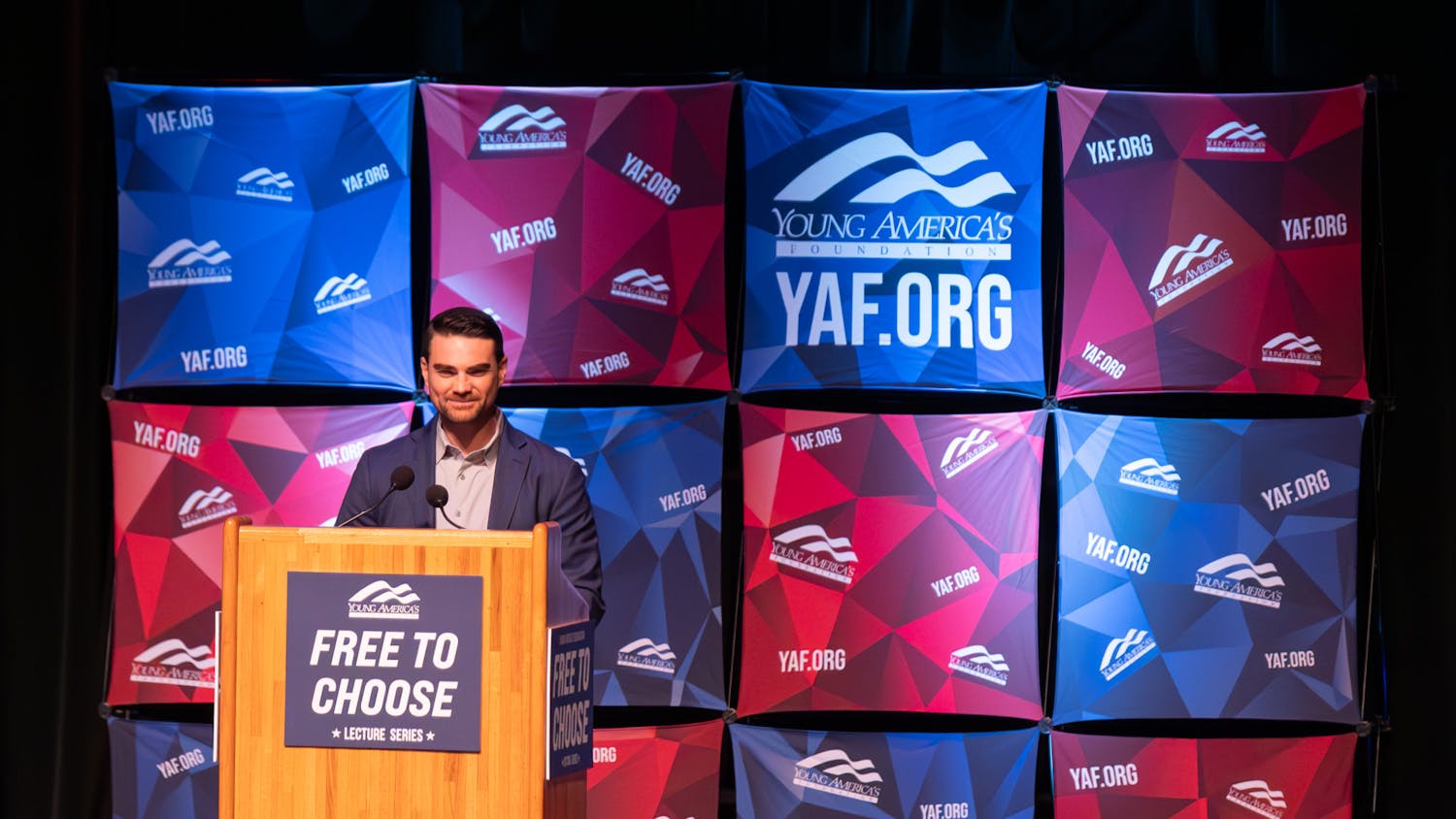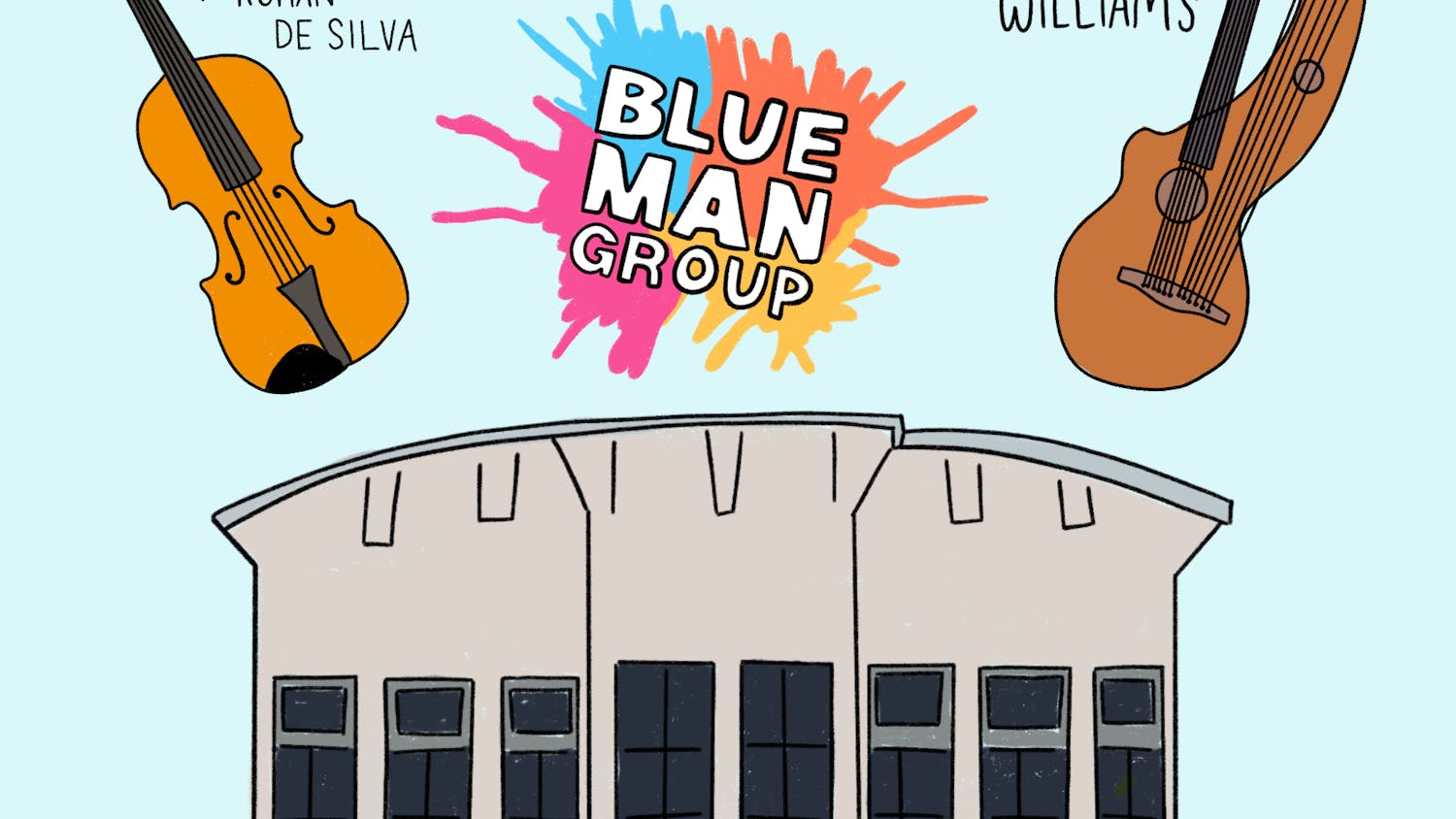When Ranee Ramaswamy started spilling coarse rice flour on the polished black floor of UF professor Joan Frosch’s choreography classroom Monday, no one asked her to stop. That’s because the nationally recognized performer and teacher wasn’t making a mess — she was making art.
Ramaswamy and her Minneapolis-based dance company, Ragamala Dance, came to UF before their show to demonstrate Indian culture to students. Ragamala Dance will perform “Sacred Earth” at 7:30 p.m. today at the Phillips Center for the Performing Arts.
Early Monday afternoon, about 20 students watched as Ramaswamy, founder and principal dancer of Ragamala Dance, pinched some of the white powder from a small metal tin and made a grid of dots.
Ramaswamy was showing the first step of Kolam, a spiritual art form practiced by millions of women every morning in India as conscious offerings to Mother Earth, and the first of two cultural traditions she would teach the class.
“As a child, I learned this on the floor of my grandmother’s kitchen using chalk,” she told onlookers, rolling her thumb and sprinkling the rice flour in loops around the dots to make a series of connected geometrical lines resembling figure eights.
The performer had come far since she begun practicing art at the age of 5 in a concrete-floored building in Kerala, India. After moving to America in 1978, she created the Ragamala Dance company in 1992 to combine modern dance and music with Bharatanatyam, a traditional Indian dance form.
“I wanted to make this art form accessible to everyone,” said Ramaswamy, “to create works that keep our own styles without diluting it.”
Utilizing rhythmic foot stomps, struts across stage, and windmilling arm and hand movements, the six dancers of Ragamala Dance combine Bharatanatyam and Kolam to entertain audiences while exposing them to Indian culture.
“You draw the audience with their eyes, “ dancer Tamara Nadel, 39, told the students. “That’s something that ascends style, culture and technique.”
Ramaswamy compared the dancers’ physical storytelling techniques to poets choosing the correct vocabulary to express themselves.
“Once one has internalized the idiom, she can express the story,” Ramaswamy said.
The show also features translated classic Indian poetry performed live by two vocalists, a violinist and a percussionist.
Frosch, who is also the director of the UF Center for World Arts, said the demonstration was part of the organization’s goal to produce not only artists but also global citizens. She said her students were learning a culture “from the inside out.”
“Dance is a wonderful vehicle to communicate cross-culturally,” she said. “It is not bound by language.”
Kenny Frechette, a 21-year-old dance senior, said he appreciated the combination of mathematics, spirituality and philosophy in Bharatanatyam. He said his Catholic upbringing often made religion seem compartmentalized away from dance.
“The spirituality is really integrated in the dance,” Frechette said. “It’s really a beautiful thing and a beautiful way to live.”
Contact Michael Scott Davidson at mdavidson@alligator.org.





